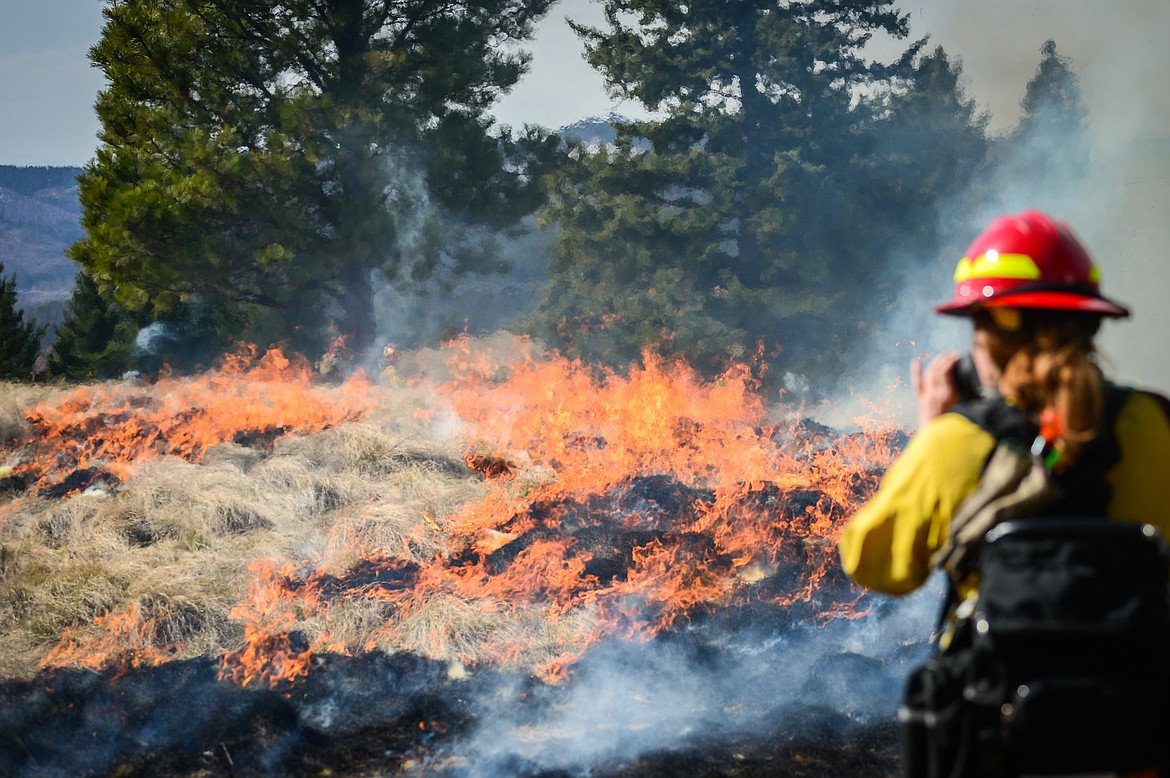Prescribed burns planned around Northwest Montana
Flathead National Forest is planning to conduct fall prescribed burning as conditions become favorable, and smoke will be visible from the Flathead Valley.
Burning will follow Montana air quality standards and coordinated with Montana State Department of Environmental Quality to reduce the impacts of smoke.
Swan Lake Ranger District
Swan Valley Bottom Maintenance Burning – This project includes maintenance broadcast burning in previously treated timber harvest units located within the Swan Valley. Specific locations include the Lion Creek Drainage, and Meadow Creek area. These treatments will use prescribed fire for fuels reduction, large ungulate winter range and forest health improvement.
How Now Timber Sale – This includes broadcast burning in timber harvest units located on Sixmile Mountain, north of Swan Lake, MT. These treatments will use prescribed fire for fuels reduction and vegetation regeneration.
Tally Lake Ranger District
Whitefish Municipal Watershed — Natural fuels will be treated with prescribed fire in several units ranging from 36-268 acres to reduce likelihood of crown fire, reduce stand density, improve mule deer and elk habitat, and prepare areas for planting of whitebark pine. A helicopter will conduct aerial ignition. Smoke from the prescribed fire will be highly visible from Whitefish and the greater Flathead Valley.
Ashley Mountain — Natural fuels in 200 and 484 acre-units will be treated with prescribed fire to reduce likelihood of crown fire, reduce stand density, and improve mule deer and elk habitat. The prescribed fire will also reduce likelihood do fire around the Ashley Mountain communication site. Smoke from the prescribed burn will be highly visible from the Ashley Lake area.
Taylor Hell Roaring – 500 acres will be treated to increase forest resilience to insects and diseases and wildland fire disturbances while maintaining a natural forested aesthetics. This treatment will reduce the risk and severity of large-scale stand-replacing fires to protect values at risk within the wildland-urban interface, Whitefish Mountain Resort, and electronic sites along the Whitefish Divide. The treatment will also aid in restoring whitebark pine and western white pine where suitable habitat conditions exist, as well as maintaining and improving terrestrial wildlife species habitat and security.
Gergen – This 196-acre unit is north of FS road 60 (Good Creek) just past the 10-mile marker and the ridge West of Grouse Creek. The main goals are to maintain and improve wildlife habitat and reduce encroachment of conifers maintaining an open south aspect.
Hungry Horse District
Red Whale Landscape – Approximately 536 acres will be treated with prescribed burning this fall in Moose creek and Moran creek. This project location is in the North Fork of the Flathead about 4 miles northwest of Polebridge. Depending on weather, this burn is planned for mid to late September or early October. The purpose of this project is to help restore a more historical fire regime to the ecosystem, improve wildlife habitat, and reduce hazardous fuels to reduce wildfire risk and aid in potential future fire suppression efforts.
Belton Landscape – This prescribed fire project will treat 5 units totaling 916 acres. The project is designed to restore fire to the ecosystem and remove dead and down fuels while reducing conifer encroachment in openings to improve wildlife habitat. The units are located west of, and adjacent to, the northernmost portion of the Great Bear Wilderness near West Glacier.
Hungry Lion Landscape – 306 acres will be treated with prescribed burning to restore fire to the ecosystem and remove dead and down fuels, while reducing conifer encroachment in openings to improve wildlife habitat. The project is located east of Hungry Horse Mountain and West of the Great Bear Wilderness boundary.
Royal Tiger 86 – The objective of this prescribed fire unit is to reduce the downed fuel loading, to minimize wildfire hazard and to prepare the 16-acre site for tree planting.
Royal Tiger 54 and part of 54A – Two unit, 13.3 acres and 26.6 acres respectively, will be treated with broadcast burning to reduce fuel loading and prepare the units for tree planting. These units are located in the Emery Creek Drainage on the north side of Emery Creek.
Spotted Bear Ranger District
Spotted Bear River units E, M, and N – Hand and aerial ignition conducted by unmanned aircraft system (UAS) will be utilized to blackline approximately 100 acres of Spotted Bear River units E, M, and N in order create a buffer for burning the rest of these units as well as adjacent units 50, 65, 66 and Silver Mule 48, & 49 in the spring or next fall using aerial ignition. The units are located on the South end of Horse Ridge near the Spotted Bear Ranger Station and are being burned to reduce fuel loading, maintain and increase winter range forage, and reintroduce fire into the ecosystem. The units are a mix of grassy openings, shrub fields, and timber patches. In the absence of fire since 1929, conifer encroachment into the shrub fields and grassy openings has begun to reduce the available forage in this area. The low to moderate intensity prescribed fire is intended to push back the conifer encroachment while retaining key thermal cover timber patches.
Spotted Bear Mountain Unit 300 – Utilizing hand and aerial ignition (UAS), a prescribed fire unit in the Spotted Bear Mountain timber sale will be burned in conjunction with a timber harvest unit (Silver Mule unit 71) for a total of 48 acres. The units are located to the southeast of the Spotted Bear Ranger Station, just south of Spotted Bear Lake. The treatment will reintroduce wildfire to a ponderosa pine stand that has not seen fire since the 1920s. Along with providing scarification for planting of new trees in Silver Mule 71, the prescribed fire will reduce the understory fuel load, increasing future fire resistance.


